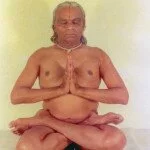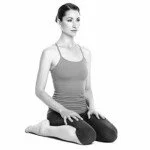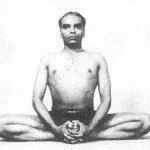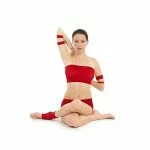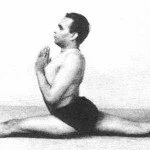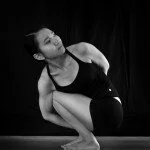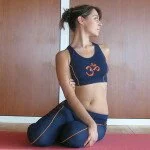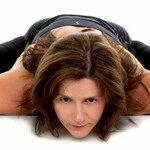Sukhasana (सुखासन):-
Sukhasana (soo-kah-sah-nah; Sanskrit: सुखासन; IAST: Sukhāsana), Easy Pose, Decent Pose or Pleasant Pose is an asana practised in yoga, similar to sitting in a simple cross-legged position. While opening the hips and lengthening the spine, the asana’s relative ease on the knees makes it easier than siddhasana or padmasana for people with physical difficulties. Read More
Padmasanam (पद्मासन):-
The Lotus Position (Sanskrit: पद्मासन [pɐd̪mɑːs̪ɐn̪ɐ], IAST: padmāsana) is a cross-legged sitting asana originating in meditative practices of ancient India, in which the feet are placed on the opposing thighs. It is an established asana, commonly used for meditation, in the Hindu Yoga, Jain and Buddhist contemplative traditions. The asana is said to resemble a lotus, to encourage breathing proper to associated meditative practice, and to foster physical stability.Read More

Siddhasana (सिद्धासन):-
Siddhasana (Sanskrit: सिद्धासन; IAST: siddhāsana) or Accomplished Pose is an asana.
The name comes from the Sanskrit words siddha (सिद्धा; siddha) meaning both “perfect” and “adept”,[2] and asana (आसन; āsana) meaning “posture” or “seat”. Read More
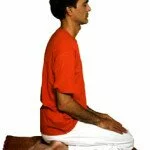
Vajrasana (वज्रासन):-
Vajrasana (vahj-rah-sah-nah[needs IPA]; Sanskrit: वज्रासन; IAST: vajrāsana), Adamantine Pose, Diamond Pose, Kneeling Pose, Pelvic Pose and Thunderbolt Pose is an asana….. Read More
Simhasana (सिंहासन):- Simhasana (Sanskrit: सिंहासन; IAST: Siṁhāsana) or Lion Pose is an asana.
The name comes from the Sanskrit words simha (सिंहा) meaning “lion”, and asana (आसन, āsana) meaning “posture” or “seat”…Read More
Virasana (वीरासन):-
Virasana (vir-ah-sah-nah[needs IPA]; Sanskrit: वीरासन; IAST: vīrāsana) or Hero Pose is an asana.The name comes from the Sanskrit words vira meaning “man” or “hero” or “chief”, and asana (आसन, Āsana) meaning “posture” or “seat”..Read More
Dandasana (दण्डासन):-
Dandasana (IPA: [dəɳɖɑːsənə] dahn-dah-sah-nah; Sanskrit: दण्डासन; IAST: Daṇḍāsana) or Staff Pose is an asana.The name comes from the Sanskrit words Danda (दन्द, Danda) meaning “stick”, and Asana (आसन, Āsana) meaning “posture”…..Read More
Baddha Konasana (बद्धकोणासन):-
Baddha Konasana (bah-dah koh-nah-sah-nah; Sanskrit: बद्धकोणासन ; IAST: baddhakoṇāsana), Bound Angle Pose or Cobbler Pose (after the typical sitting position of Indian cobblers when they work) is an asana…..Read More
Ardha Matsyendrasana (अर्धमत्स्येन्द्रासन):-
Ardha Matsyendrasana (Sanskrit: अर्धमत्स्येन्द्रासन; IAST: Ardha Matsyendrāsana), Half Lord of the Fishes Pose, Half Spinal Twist Pose or Vakrasana is an asana.
The asana usually appears as a seated spinal twist with many variations, and is one of the twelve basic asanas in many systems of Hatha Yoga. ….Read More
Garbhasana (गर्भासन):-
Garbhasana (Sanskrit: गर्भासन; IAST: Garbhāsana), Embryo Pose, Foetus Pose or Fetus Pose is an asana.
The name comes from the Sanskrit words garbha meaning “embryo” or “fetus” and asana (आसन) meaning “posture” or “seat”.
During the performance of this asana, the body takes on the shape of a fetus.. ….Read More
Gomukhasana (गोमुखासन):-
Gomukhasana (goh-moo-kha-sah-nah; Sanskrit: गोमुखासन; IAST: Gomukhāsana) or Cow Face Pose is an asana.
The name comes from the Sanskrit words Go (गो, Go) meaning “cow”, Mukha (मुख, mukha) meaning “head” or “mouth”, and Asana (आसन, Āsana) meaning “posture” or “seat”…..Read More
Hanumanasana (हनुमानासन):-
Hanumanasana (Sanskrit: हनुमानासन) or Monkey Pose is an asana.
The name comes from the Sanskrit words Hanuman (a divine entity in Hinduism who resembles a monkey) and asana (posture) and commemorates the giant leap
made by Hanuman to reach the Lankan islands from the mainland of India……Read More
Pasasana (पाशासन):-
Pasasana (Sanskrit: पाशासन; IAST: pāśāsana) or Noose Pose is an asana.
The name comes from the Sanskrit words pasa (or pasha) (पाश, pāśa) meaning “noose” or “snare” and asana (आसन) meaning “posture” or “seat”…..Read More
Bharadvajasana (भरद्वाजासन):-
Bharadvajasana (IPA: [bʱɐrɐd̪ʋɑːɟɑːsɐnɐ]; Sanskrit: भरद्वाजासन; IAST: Bharadvājāsana) is an āsana.
The asana dedicated to sage Bharadvāja who was one of the Saptarshis (Seven Great Sages Rishi) in the present Manvantara; the others being being Atri,
Vashishtha, Vishvamitra, Gautama, Jamadagni and Kashyapa……Read More
Janusirsasana (जानु शीर्षासन):-
Janu Sirsasana (jah-noo shur-shah-sah-nah; Sanskrit: जानु शीर्षासन; IAST: jānu śīrṣāsana), Head-to-Knee Pose, Head-to-Knee Forward Bend, Head of the Knee Pose or Head-on-Knee Pose is an asana. It is part of the Ashtanga Yoga Primary Series and is commonly practiced as a seated asana in many styles of yoga……Read More
Paschimottanasana (पश्चिमोत्तानासन):-
Paschimottanasana (pash-ee-moh-tan-ahs-anna; Sanskrit: पश्चिमोत्तानासन; IAST: paścimottānāsana), Seated Forward Bend or Intense Dorsal Stretch is an asana…….Read More
Upavistakonasana:-
Upavistakonasana (oo-pah-VEESH-tah cone-AHS-anna)
upavistha = seated, sitting
kona = angle ……Read More


